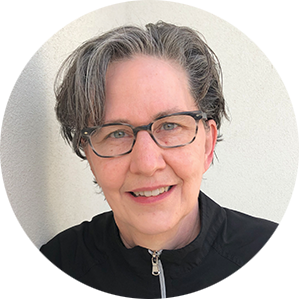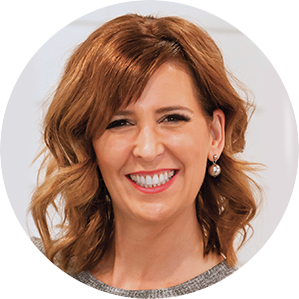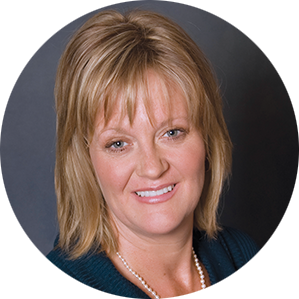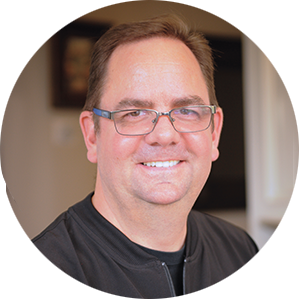After a few months of performing only emergency procedures due to the COVID-19 pandemic, dental offices throughout the country have reopened. But the experiences are different — for dentists, their staffs, and patients.
Variety of Agencies Provide Guidelines
Dental offices have been following directives from governors, state health departments, state labor, and industry offices, and state dental boards. Dentists have also looked to the American Dental Association (ADA), their state dental associations and the Center for Disease Control and Prevention (CDC), and World Health Organization (WHO) for guidance in responding to COVID-19. Many of the protective measures put in place are meant to protect both patients and providers.
One dentist we talked with sought information from a Dentists Against Coronavirus Facebook group. Dr. Amy Norman says it served as an incredible resource and collaboration opportunity with colleagues. “I wanted to be on the leading edge of best practices,” she says.
Dentists Put Their Health and Lives at Risk for Patients
According to the US Department of Labor’s Occupational Safety and Health Administration (OSHA), dental work can place dentists and dental hygienists at risk for COVID-19 infection and includes dental health care providers in the “very high exposure risk” category. Despite that, practices throughout the country have done their best to adjust to the “new normal,” making safety enhancements for their staffs and patients. They are doing as much as they can with what they know today to keep everyone safe and the offices disease-free, while still providing an enjoyable dentist visit for their patients. We talked to four Burkhart clients – three in Washington and one in Utah – to find out how they have responded to the pandemic and tips they have for other practices.
Building, Administrative and Clinical Operations
Listed are some of their typical measures including safety enhancements to their buildings as well as administrative and clinical procedures.
Building Safety
Air Quality
Many dentists’ offices have focused on improving indoor air quality. Some are using hypochlorous acid fogging – a natural way to clean and disinfect. Others, like Dr. Norman, have also added Surgically Clean Air® or other brands of air purifiers to improve the quality of indoor air for patients and staff. “This is what we need in order for people to feel safe,” says Dr. Norman.
Dr. Nannette Goyer’s office not only regularly services their HVAC system, but uses technology used in hospitals to prevent airborne and surface contamination.
Dr. Suzy Snow focuses on ambient air management with HEPA air filtration continuously in treatment rooms and common areas.
Office Maintenance
Offices are deep cleaned daily and community spaces are wiped with CDC-approved cleaning products. Treatment rooms are cleaned according to CDC guidelines. Some have added enhanced nightly disinfection procedures of equipment and office fixtures.
Administrative Procedures
“Our office has always utilized personal protective equipment (PPE) that has exceeded all the CDC guidelines. But in light of the COVID-19 pandemic, we have instituted additional guidelines and protocols to ensure our patients’ and our staff’s safety,” says Dr. Snow.
Social Distancing
Offices are typically using efforts to socially distance patients and minimize the number of patients in reception areas. Measures include:
- Staggered appointments so patients don’t come in contact with one another
- Patient check-in via text/phone call when they arrive
- Spacing of furniture six or more feet apart in waiting areas
- Plexiglass shields/sneeze guards or droplet barriers in reception areas
- Asking family members to wait in their cars during patient appointments
- Setting up payment arrangements in advance to avoid delay and allow contactless exits for appointments
Dr. Norman’s office even offers a valet concierge service. “We greet patients at their cars, take their temperatures and escort them in. We also escort them back to their cars. It’s a way we can virtually hug our patients,” she says.
Clinical Practices
Additional PPE: Before the pandemic, most dentists wore personal protective equipment (PPE) such as wearing their everyday clothes under a gown, along with gloves, eye protection, and a basic face mask.
Now they’ve added scrubs, a face shield over a heavy-duty mask, such as an N95 or level 3 mask, respirators, and head and shoe covers. Dental assistants are wearing surgical masks and protective gowns and some have full face shields.
Equipment and Technology: Dentists have made considerable investments in equipment and technology solutions to help keep patients and staff safe during the COVID-19 pandemic.
ADS Extraoral Dental Suction System
Removes droplets and aerosols reducing the infection risk and keeping air clean.
Isolite Technology
Removes droplets and aerosols and acts as a bite block, illumination, and retraction. “It really is a benefit to both clinician and patient,” says Dr. Goyer.
Purevac® High Volume Evacuation System with Mirror Tip
Enables one-handed approach to evacuating fluid and debris while facilitation retraction, visibility, and illumination during procedures.
DryShield® Isolation System
Keeps the viral load down during an aerosol procedure.
Porter Scavenger Rubber Goods System
Air tubing for nitrous oxide units and enhanced sterilization techniques on nitrous tubing.
Surgically Clean Air®
Purifiers to improve the quality of indoor air.
Contamination/Exposure Risk Reduction
Many have instituted screening for COVID-19 symptoms and other risk exposure/risk reduction efforts:
- Requiring a mask to be worn by patients upon entering the office
- Patients wash hands upon entering the office
- Patients bring own blankets and music
- Enhanced operatory disinfection procedures of surfaces between patients
- COVID-19 symptom screening with a thermometer
- Hand sanitizer readily available
- Magazines and toys removed from waiting areas
- Keyboards and mouse in treatment rooms covered with plastic wrap and changed between patients
- Employee symptom/exposure log
- Patients use antimicrobial oral pre-rinse before procedures
- Alternating treatment rooms
- Staff changes out of scrubs/clinical clothes prior to leaving office
- Patient and staff questionnaires about COVID-19 symptoms and exposure
- Patients wear boot covers in office
- Difficult-to-clean supplies removed from counters
- Educational materials provided to patients to enhance pandemic awareness
Most Important to Keep Patients & Staff Safe
Dr. Norman feels treating the air has been the most important in keeping patients and staff safe. But she has also implemented a variety of other safety measures. “I don’t think my team would have returned without all of these new procedures and equipment. Everything I’ve added has helped them feel confident in their safety.”
Dr. Goyer thinks attention to detail is important to keep patients and staff safe. “Whatever you’re doing at the time is the most important thing. This may be turning over a room, interacting with a patient, or turning over an operatory,” she says.
She also says the advice from the CDC and WHO has been important. “I appreciate more than I can say the CDC and WHO, as they have both been so valuable to global health.”
Burkhart Helps Clients Stay Informed and Make Knowledgeable Business Decisions
The four dentists appreciated the support they received from Burkhart during the COVID-19 shutdown and after.
Dr. Snow: “My Burkhart Account Manager Jack Stewart has been really good. Anytime there is PPE available out there, he orders it for me or tells me about it. He even made some homemade face shields for us at the beginning of all this. Jack has done a great job in doing research and figuring out what can be used to solve certain problems – and to find those items. I really appreciate his support.”
Dr. Goyer: “Our Burkhart Account Manager Jack Stewart is amazing. I feel like he’s an extension of our staff. He makes you feel like you are the only dentist he works with. He has been amazing in keeping us happy and supplied with PPE. He’s been very responsive in trying to make sure we all have what we need. He does it with extreme professionalism and a smile on his face.”
Dr Norman: “We had a teamwork mentality in working with our Burkhart Account Manager Niki Allan. She was a partner in collaborating with us. She was incredible especially during this really difficult time. We would text a lot – and not necessarily during normal office hours. We would share information. It was very comforting to know someone else was trying to think about these things along with us.”
Dr. Wagstaff: “My Burkhart Account Manager Ann Arrington has been very helpful in helping me find the PPE that I have needed as well as keeping me up-to-date in the current recommendations and ideas.”
Advice for Other Dentists
When asked what advice he would give other dentists, Dr. Wagstaff says, “It is very important to take the CDC and ADA recommendations seriously. It protects our patients and staff as well as protects the integrity of our profession.”
Dr. Norman says that dentists need to assure their patients that “We’re on top of this, we’re handling this, and COVID has made us better.” “To continue to earn trust,” says Dr. Norman, “we need to educate patients about what we’ve always done and will continue to do. But they need to know we will also keep evolving as things change and the needs change.”
Dr. Goyer says, “We all need to realize that this is not the final way we will deal with this. It’s a moving target. We need to continue to reassure staff and patients we are all learning and doing our best to keep everyone safe.” She adds, “While many things have changed, one thing has remained the same: our commitment to our patients’ and our staff’s safety.”
Meet the Doctors
 |
 |
|---|---|
Nannett Goyer, DDSLocation Dentists in Practice Total Staff Active Patients Year Started Current Practice Account Manager |
Amy Norman, DDS, PSLocation Dentists in Practice Total Staff Active Patients Year Started Current Practice Account Manager |
 |
 |
Suzy Snow, DDSLocation Dentists in Practice Total Staff Active Patients Year Started Current Practice Account Manager |
Chad Wagstaff, DDSLocation Dentists in Practice Total Staff Active Patients Year Started Current Practice Account Manager |
Written by Denise Ploof
Published in Catalyst – Fall/Winter 2020.
Category: COVID-19
Back to Articles